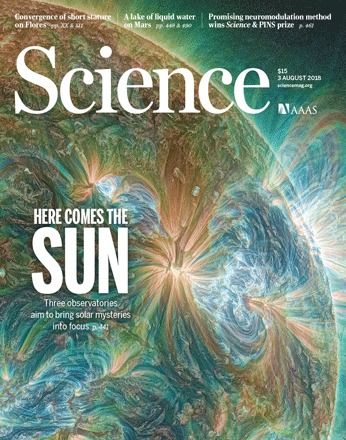Cuprate superconductors have many unusual properties even in the “normal” (nonsuperconducting) regions of their phase diagram. In the so-called “strange metal” phase, these materials have resistivity that scales linearly with temperature, in contrast to the usual quadratic dependence of ordinary metals. Giraldo-Gallo et al. now find that at very high magnetic fields—up to 80 tesla—the resistivity of the thin films of a lanthanum-based cuprate scales linearly with magnetic field as well, again in contrast to the expected quadratic law. This dual linear dependence presents a challenge for theories of the normal state of the cuprates.
Science, this issue p. 479
The anomalous metallic state in the high-temperature superconducting cuprates is masked by superconductivity near a quantum critical point. Applying high magnetic fields to suppress superconductivity has enabled detailed studies of the normal state, yet the direct effect of strong magnetic fields on the metallic state is poorly understood. We report the high-field magnetoresistance of thin-film La2–xSrxCuO4 cuprate in the vicinity of the critical doping, 0.161 ≤ p ≤ 0.190. We find that the metallic state exposed by suppressing superconductivity is characterized by magnetoresistance that is linear in magnetic fields up to 80 tesla. The magnitude of the linear-in-field resistivity mirrors the magnitude and doping evolution of the well-known linear-in-temperature resistivity that has been associated with quantum criticality in high-temperature superconductors.









Comments are closed.